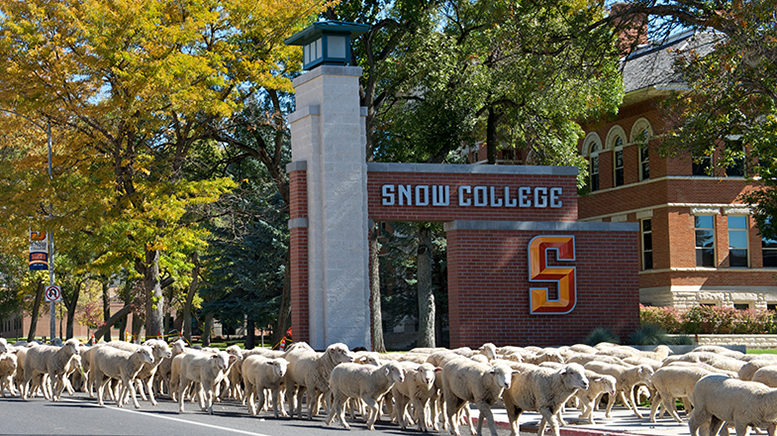NEWPORT BEACH, Calif. — The road in front of Snow College in central Utah is often the site of large livestock drives, yet during a budget crisis in 2012, a former president nearly dropped the agriculture program.
Fortunately, that didn’t happen, and the number of students in the program has risen dramatically since then, said Jay Olsen, director of agriculture and agribusiness, during a panel on rural colleges at the American Association of Community Colleges’ (AACC) Workforce Development Institute.
Rural community colleges are critical to the economic success of their communities, yet they often don’t get the recognition they deserve, nor the funding they need, said Randy Smith, president of the Rural Community College Alliance (RCCA), a group affiliated with AACC.
Ranchers and farmers who’ve taken risk-management courses at Snow have estimated they’ve increased their net income by $25,000 to $50,000 a year, Olsen said.
Olsen uses actual financial records from local farmers and ranchers in his agricultural management courses. In one instance, students had an opportunity to sit at the table while a farmer made the decision to sell 1,000 head of cattle. “That makes our agriculture classes real,” he said.
Giving students an opportunity to make connections with local farmers and business people helps students with entrepreneurial ambitions get a jump start, he added.
Challenges of rural colleges
If a rural college closes, it would have a “devastating impact” on the local community, as few other options are likely to be available, said Smith, who’s also president of Sissteon Wahpeton College in South Dakota.
Among the challenges in rural areas are an outflow of population and higher poverty and unemployment rates than in urban areas and a skills gap resulting in unfilled jobs, he said.
Another challenge is the difficulty of finding qualified instructors, especially in fields where there is a skills gap, such as technology, construction, agriculture, healthcare and welding, Smith said.
Faculty pay is also problematic. Salaries at Snow are on par with the local K-12 system but the community college requires faculty to have a master’s degree, Olsen said. “People come for the lifestyle, not the pay,” he said.
Kevin Rose, associate vice president for workforce development at Northeast Texas Community College (NTCC), cited additional challenges: insufficient state funding, inconsistent enrollment, limited broadband access, “the graying of the faculty” and the expectation that the college needs to “be all things to all people.”
Innovative solutions
Some of the public schools near NTCC have wi-fi hotspots, so on evenings and weekends their parking lots are full of people sitting in their cars accessing the internet. That’s not a great solution, Rose said, so to ensure all students have broadband access, NTCC is looking at forming partnerships with private entities and the council of local governments.
Another proposal under discussion calls for school buses to have wi-fi, which would serve the neighborhood where the bus driver parks the bus overnight.
To save money, NTCC hopes to partner with another community college to provide shared lab space for surgical technology and dental health. That would eliminate some overhead and expand services for students, Rose said.
To address the difficulty of recruiting faculty to replace those who are retiring, he said the president of NTCC hopes to build five to eight homes on campus for faculty. In addition to being an employment perk, having faculty live on campus means they would spend more time with students.
And to help students having trouble getting to campus, the college bought two mini-vans to provide door-to-door shuttle service.
Community engagement is critical at NTCC, Rose said. When farmers were having trouble getting their produce to markets 120 miles away in Dallas, the college developed a plan to help them sell locally. Students painted an old diesel bus to use as a mobile market to serve economically distressed communities, allowing residents to use federal food assistance benefits to purchase healthy food.
Improve the image
Smith urged rural college leaders to focus on enrollment management, the recruitment and retention of students, training people for certificates in technical fields with a strong job outlook and good salaries, and creating a positive perception in the community.
“What we don’t do well is wave our banner,” Smith said. “We need to do a better job of promoting ourselves and communicating these issues to lawmakers.”
He urged college leaders to talk about the benefits of rural America, including the lower cost of living, better quality of life and the existence of a ready and willing workforce.
RCCA helps leaders of rural colleges address their challenges, network with their peers, and help their colleges operate more efficiently, Smith said.

